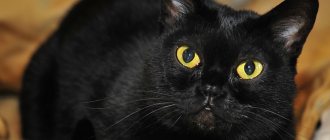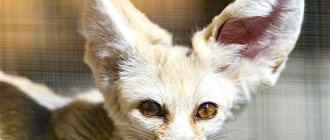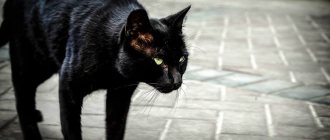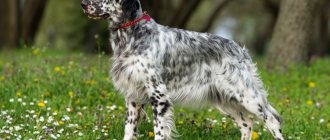How long do birds live?
Goldfinches belong to the finch family.
The size of the birds is more modest compared to sparrows. The body length of goldfinches is only twelve centimeters. Adults weigh no more than 20 grams. They have a very bright color, but at the same time the surface of the head, tail and wings remain black, making the birds look like real dandies. But on the forehead, tummy and cheeks there are snow-white feathers. You can see a red ring near the beak, and bright yellow stripes on the wings. Outwardly, it is usually very difficult to distinguish a female from a male. In terms of content, there is no difference between them. True, it is believed that their voice data is different.
In nature, goldfinches are quite numerous. They live in Western Siberia, Europe, North Africa and Central Asia. But they prefer to bypass the northern regions. Minor seasonal migrations of birds have led to the emergence of several varieties.
Goldfinches are songbirds. Their repertoire can include more than 20 melodies. An interesting fact is that goldfinches can make not only pleasant melodic sounds, but also rude and unpleasant ones. Only canaries can compete with goldfinches in singing. By the way, goldfinches do not sing during the molting period. It has been noticed that females sing more skillfully and beautifully than males.
Many people wonder how long goldfinches live at home. According to experienced people, life expectancy directly depends on the quality of care for your pet. Proper care will protect your bird from illness. This means that the goldfinch will delight you with his singing for a long time - definitely 20 years, if not more.
This is what a goldfinch looks like
Birds called goldfinch are usually classified as members of the finch family; the goldfinch’s body size is smaller than that of a sparrow, and the body length from head to tip of tail is 12 centimeters. An adult bird weighs only 20 grams. Adult goldfinches are brightly colored, but the top of the head, wing area and tail remain black, giving them a truly dapper appearance.
Description of birds
Goldfinches belong to the finch family. The size of the birds is more modest compared to sparrows. The body length of goldfinches is only twelve centimeters. Adults weigh no more than 20 grams. They have a very bright color, but at the same time the surface of the head, tail and wings remain black, making the birds look like real dandies. But on the forehead, tummy and cheeks there are snow-white feathers. You can see a red ring near the beak, and bright yellow stripes on the wings. Outwardly, it is usually very difficult to distinguish a female from a male. In terms of content, there is no difference between them. True, it is believed that their voice data is different.
In nature, goldfinches are quite numerous. They live in Western Siberia, Europe, North Africa and Central Asia. But they prefer to bypass the northern regions. Minor seasonal migrations of birds have led to the emergence of several varieties.
Is it worth keeping a goldfinch in your house?
Is it possible to keep goldfinches at home? Of course. But it is worth knowing all the features of these birds. In general, keeping goldfinches has its advantages. The birds have very beautiful plumage, which makes their owners happy. In addition, goldfinches sing beautifully, and you can enjoy their voice almost all year round; only during periods of molting do they become silent.
Goldfinches at home delight owners with their friendly nature. In addition, they are very smart, and therefore learn quickly. Birds willingly become tame. The hybrid of a canary and a goldfinch is distinguished by its external beauty and a very attractive voice. In general, you shouldn’t take wild specimens to keep goldfinches at home, since you probably won’t be able to tame them. You need to purchase pets in specialized places.
Pros and cons of maintaining a home
The black-headed goldfinch is the most common option for keeping at home. People keep these birds for aesthetic pleasure and because they are unpretentious in everyday care. In addition, the small size of the pet will not cause problems with choosing a cage and placing it in the room.
Get a bird if you suffer from nervous disorders or depression. Bird singing has a beneficial effect on overall moral well-being and improves mood. The goldfinch is intelligent, easy to train and very sociable. He is a good-natured and cheerful creature, in whose company it is always pleasant to be.
https://youtu.be/xYt5h_gkXWc
Take into account the disadvantages that are also present when keeping goldfinches at home. In particular, we are talking about wild individuals. If you are taming a street bird, do not expect it to be willing to approach you.
Disadvantages also appear when several goldfinches live in one room. Especially if they were isolated from their parents as chicks. Such birds often become competitors. If you are getting several goldfinches, give each of them a separate cage.
Goldfinches in Nature
In Nature, goldfinches are sedentary birds, but in the north of their habitat they can roam quite long distances. Also, they can fly in small flocks or groups between breeding periods in order to search for food. So, do not be surprised that you can meet flocks of goldfinches in the forest, in a field, in a country house or even in a city park.
In Nature, the diet of goldfinches is plant-based, therefore, birds prefer to stay closer to those areas that are rich in grass, but even weeds can become food for them if there are no seeds of bushes, grasses and trees. However, despite the fact that adult birds feed on plants and seeds, they include insects in the feeding diet of their chicks.
Where to keep pets?
It is necessary to keep goldfinches at home in cages or enclosures. Birds quickly settle down and get used to completely new conditions. The main thing is to be able to create the necessary comfort. For a bird cage, it should not be less than 50 centimeters in length. In addition, it must necessarily be two-tiered.
It is very important that the cage has a distance between the bars of no more than 1.5 centimeters, since otherwise the pet may slip out and fly away, and in the worst case, even injure itself.
General cleaning of the bird's cage is carried out every week. To do this, use special non-hazardous detergents. It is imperative to thoroughly wash the perches, feeders, and drinkers. All items are not only washed, but also dried. You should be especially attentive to drinking water and bathing water.
Breeding goldfinches at home is a simple matter. Birds reproduce well throughout the year. The female must be provided with everything she needs to build a nest in which she will later lay eggs. Birds use feathers, lichen, meadow grass, bark, birch bark, moss, animal hair, etc. as building materials.
Females lay no more than six eggs, colored blue. There are purple blotches and stripes on their surface. Responsibility for incubating the offspring falls entirely on the female. She incubates the chicks for several weeks. It is very important to place the male in another cage after fertilization. Otherwise, he may distract the female from her direct responsibilities.
We invite you to read: Features of carp breeding at home
Once born, the chicks develop very quickly. In just two weeks they become completely independent, and therefore can leave their native nest. But still, in order for the babies to get stronger and be fully ready for independent life, they need to be kept next to their mother for about a week.
Sometimes there are cases when females refuse to hatch their own offspring. But it doesn't matter. Eggs can be kept under a lamp, as if in an incubator.
Goldfinches are quite tame birds
If you decide to start breeding these birds, then it will be useful for you to know that in Nature the breeding season for goldfinches occurs at the beginning of early spring, while in captivity birds can breed throughout the year. In order for a female goldfinch to lay eggs, she needs to build a nest; to do this, you must provide her with the necessary building material, which you will unobtrusively place in her cage or enclosure.
These can be pieces of moss, bark, birch bark, lichen, meadow vegetation, animal hair (for example, you trimmed your poodle - find out here how to do it at home). At a time, a female goldfinch can lay from 4 to 6 eggs, with a bluish shell, which is decorated with purple stripes and specks.
Hatched goldfinches grow quite quickly, and after 14-16 days they can already leave the nest and be independent. But, if there is such an opportunity, it is better to leave them for another week with the female, so that they become stronger and mature.
Video about goldfinches
Today we talked about the features of keeping goldfinches at home and how to create comfortable conditions for these birds in your home and how to properly care for them. If any of our readers already have experience keeping goldfinches at home, be sure to share with us your tips, stories and recommendations... We also invite you to join our VKontakte group, on the pages of which we discuss many interesting facts from the life of pets.
Pet breeding
Breeding goldfinches at home is a simple matter. Birds reproduce well throughout the year. The female must be provided with everything she needs to build a nest in which she will later lay eggs. Birds use feathers, lichen, meadow grass, bark, birch bark, moss, animal hair, etc. as building materials. Females lay no more than six eggs, colored blue. There are purple blotches and stripes on their surface. Responsibility for incubating the offspring falls entirely on the female. She incubates the chicks for several weeks. It is very important to place the male in another cage after fertilization. Otherwise, he may distract the female from her direct responsibilities.
Once born, the chicks develop very quickly. In just two weeks they become completely independent, and therefore can leave their native nest. But still, in order for the babies to get stronger and be fully ready for independent life, they need to be kept next to their mother for about a week.
Sometimes there are cases when females refuse to hatch their own offspring. But it doesn't matter. Eggs can be kept under a lamp, as if in an incubator.
What to feed the goldfinch at home?
According to reviews, goldfinches must be kept separately at home. Keeping birds in the same cage can harm your pets. Oddly enough, females and males strongly conflict with each other when they are in the same space. And this has a bad effect on the well-being of birds. Males, against the backdrop of everyday problems, can become sad and lethargic, and even stop singing. But living in different cages or neighboring enclosures suits the birds quite well.
When talking about how to care for a goldfinch at home, it is worth remembering that from time to time the birds must be allowed out of their enclosures or cages to fly. In addition, it is necessary to change the water for bathing and drinking every day. Fresh fluid is the key to your pet's health.
At home, goldfinches should be fed with grain mixtures, which include plantain, sunflower, hemp, millet, dandelion, burdock, and oatmeal. Speaking about what goldfinches eat at home, it is worth remembering the need for mealworms and ant pupae in the diet.
Birds love porridge and all kinds of wet mash. This type of food should be given up to twice a week. Usually goldfinches eat twice a day, and eat a little at a time. What do you think is the bird's favorite treat? These are boiled carrots that need to be grated. You should add a boiled egg and crackers to the delicacy.
Goldfinches also benefit from plant foods, such as plantain and dandelion.
Many bird lovers note that keeping goldfinches is no more difficult than other birds. You just need to follow all the rules for keeping pets. When making a winged friend and companion, you should be prepared for the fact that he will show his character. Any living creature has its own character, and birds are no exception in this regard.
It is very important to make friends with your pet and establish a relationship with it. It is very important to follow a proper diet and diet. The health of the goldfinch depends on this. However, sometimes owners complain that their charges do not eat all the food. As a rule, birds prefer one or more varieties. However, this is wrong.
We suggest you read: Mandarin duck maintenance and breeding
As we have already noted, nutrition should be balanced. Therefore, it is worth changing the food manufacturer, perhaps this will help you. Very often, birds prefer to eat only sunflowers, which can lead to obesity and illnesses. But knowing what goldfinches eat at home, it is necessary to achieve adequate nutrition.
Otherwise the birds are excellent to keep. They invariably delight their owners with ringing trills and chirps. Such a companion can cheer up even in a sad moment. And what could be better than such a wonderful friend. Children especially love birds, although caring for them falls on the shoulders of their parents. And yet such a beautiful pet is the dream of any child.
Rules for keeping goldfinches
Before you get a goldfinch at home, you should first study all the possible information about keeping it in captivity. This bird is unpretentious and is quite easy to keep at home. According to experts, this is the best bird to keep in captivity. The presence of birds will give owners a positive mood due to their bright appearance and friendliness, even when they do not want to sing. And they sing almost constantly, with the exception of the molting season.
A spacious cage is very important for the goldfinch, which it agrees to share with other birds, as long as there is plenty of space. From time to time they should fly freely around the apartment. To increase the life of a bird, daily cleaning of its home and replacement of drinking water and bathing water is required.
It is preferable to feed the goldfinch with grain mixtures for canaries or siskins. They usually contain seeds of sunflower, dandelion, hemp, burdock, pine, plantain, oatmeal and other grains. Animal food in the form of mealworms and ant pupae is also important for birds in captivity. When feeding animal food, you need to keep an eye on the bird; not every goldfinch likes it.
In addition, your pet will enjoy various porridges and mash. It should be clarified that birds are fed porridge no more than twice a week, and at a time when the pets are not singing, one feeding is replaced with porridge.
Goldfinches need two meals a day; they eat very little. Don't forget to pamper your pet with a boiled egg, boiled carrots and small crackers - they love it very much. Drinking water should not be overlooked - it should always be fresh.
With proper care and nutrition, these little birds will delight their owners with their luscious singing and bright plumage for many years.
Goldfinches Health
Goldfinches suffer from the same diseases as parrots (read more about diseases of parrots) and other songbirds (find out about canary diseases here).
It is noteworthy that in addition to their “avian” diseases, goldfinches can also suffer from ailments that pose a real threat to human health and life. They can infect the owner with psittacosis, tuberculosis, salmonellosis and other dangerous diseases, therefore, it is always worth remembering personal safety and hygiene when caring for and communicating with the bird.
But, there are other cases when goldfinches can suffer from human diseases. For example, gout - its symptoms manifest themselves in metabolic disorders, excess urea and salt content in tissues and in the blood. And, although there are many reasons for the development of gout in goldfinches, most often it is a lack of vitamin A, an incorrect diet, intoxication of the body, poor-quality food, or drug poisoning.
At the initial stage, the disease occurs practically without symptoms; goldfinches only experience strong thirst and sudden changes in mood. Then, owners notice the appearance of white nodules with streaks in the area of the joints and tendons of the bird, while the joints look swollen. The disease progresses rapidly, and if the goldfinch is not provided with qualified veterinary care within the first few days, it may die.
The main cure for gout in the case of these birds is a strict diet that excludes protein products of animal origin from their diet, but corn flour, berries and greens, on the contrary, will be useful, as they help reduce the body’s production of uric acid. In order to strengthen the bird’s immunity, you can also start giving it vitamin complexes, but they must be prescribed by a veterinarian.
Diseases of birds
Diseases that affect canaries and parrots are also dangerous for goldfinches. If you notice that the bird is not drinking or eating, there is discharge near the beak, feathers are falling off, gastrointestinal function is disrupted, the eyes are dull, the pet must be urgently taken to the veterinarian. The doctor will help establish the correct diagnosis and prescribe treatment.
In addition, goldfinches are quite capable of having human ailments. The most common option is gout. The first signs of the disease may be thirst and a sharp change in the mood of the feathered pet. If you follow all the rules for keeping a goldfinch, the bird feels very good at home and does not get sick.
Bird walks
We have already mentioned that goldfinches must fly outside the cage. Free flight around the house or apartment is a prerequisite for a healthy lifestyle for a pet. This is due not only to the fact that the bird is bored and needs to spread its wings, but also to its feeding habits. It's no secret that goldfinches get a lot of fat.
This means that they are susceptible to obesity. To avoid such a problem, it is necessary to give the bird more greens, fruits and vegetables. And the goldfinch must fly without fail. Some owners say that they have managed to tame their pets so much that they fly into the cage only to sleep at night.
If you allow your bird to move around the apartment, it will probably choose places such as closets, high cabinets and other high places. This can be explained quite simply, because in the wild, goldfinches prefer to be in tall trees. An interesting fact is that goldfinches, no less than parrots, adore mirrors.
Is it possible to tame a goldfinch?
Goldfinches are distinguished by their intelligence and intelligence. They can easily be taught to fly to your hand for food. Very often, goldfinches are taught all sorts of tricks. For example, pulling out fortune cards for people.
However, it is worth remembering that wild individuals differ in behavior from acquired ones. Once in a cage from the outside, pets often run wild. Speaking about how to tame a goldfinch at home, we can confidently say that in just three months you can turn a wild bird into a tame one. True, you will have to show maximum patience and desire.
We invite you to read: The smallest cat breed - all about the Toy Bob cat breed
During the first week, the bird must be kept completely alone. Next, the cage is moved to a crowded place in the apartment, covered with a rag. Gradually the curtain opens, showing the pet the world around it. During the third week, the goldfinch eats in the presence of its owner, who is only a few meters from the cage.
Gradually, after a month, most of the goldfinches begin to try to sing. In the future, you can get closer and closer to the bird during its meal. You can try placing one seed on a perch and wait for the goldfinch to grab it. Then you can put the next one. This way the bird gradually gets used to your presence.
Is it worth keeping at home?
Having confirmed the artistic inclinations of this species, many immediately get excited about the idea of having this feathered miracle in their apartment. But before that, it is advisable to soberly weigh the pros and cons of such cohabitation.
pros
Let's start with the advantages. These include:
- bright appearance;
- beautiful trills that can be listened to almost all year round;
- natural intelligence and innate curiosity;
- the bird's sociable disposition;
- fast learner;
- unpretentiousness in nutrition and maintenance.
Here you can add such a factor as the small size of the bird, which will be a powerful argument when it lives in a small room.
Minuses
There are also disadvantages that should also be kept in mind:
- a specimen caught in a nearby field is unlikely to give concerts and be willing to make contact - it is best to purchase an individual at a pet store;
- Individuals of different sexes do not get along very well when kept together - this is fraught with permanent stress. In such conditions, one can forget about singing and offspring;
- chicks, already separated from their parents and living in the same cage, often become competitors (mainly for food), which can lead to fights and injuries.
Did you know? Hummingbirds are unique not only for their miniature size - they are the only bird that can confidently fly both forward and backward.
If you are sure that such difficulties will bypass pets, you can safely get birds.
Habits of goldfinches
Having acquired a pet, you will certainly have to teach it to fly around the apartment or room. Before each walk, you need to make sure that the windows and doors are closed so that the bird does not fly away from you. The cage must initially be installed in a permanent location. Then every day you can open the door and invite your pet to fly out to you.
When starting training, you can attract the bird’s attention with something tasty or a bouquet of greens, to which the goldfinch will certainly respond. The feathered friend must gradually adapt and leave the cage without any fear. When flying out into the wild, the bird will probably decide to sit on your head or shoulder. This is a completely normal desire.
No matter how much you love your feathered companion and no matter how tame he is, it's always a good idea to follow safety rules. Open windows are a taboo. You never know what comes into a bird's head. It may even inadvertently fly out of an open window. But the birds cannot find the way back. The glass itself can also pose a danger - if a goldfinch crashes into it while accelerating, it can be injured.
In general, if a pet is on a walk and flies around the apartment, then the owners should be very careful not to inadvertently crush it under the door, sit on it, or step on it. In addition, it is very dangerous to overfeed a bird. Obesity can greatly undermine a pet's health.
How to determine gender and how long they live at home
When thinking about the prospect of breeding, the future owner will certainly ask how and by what characteristics to distinguish a male goldfinch, and what to look for in order to choose a female from a pair. Ornithologists suggest that upon careful examination it is quite simple. You just need to know a few signs:
- Males are always larger, they have a larger beak, and the clarity and purity of color is always better (females look less bright and even dull).
- The “cap” on the goldfinch’s head is distinguished by graying, clearly visible against the red-black background of the plumage.
- The red fragment on her head itself slightly does not reach the line of her eyes.
- On the crown of the female there is a gray or black element in the form of a cross.
Disadvantages of sleeping on your side
- This can cause shoulder and hip pain if you have a very old mattress or if you have muscle or joint injuries.
- Wrinkles may appear and the result may be a swollen face upon waking. If a person presses their face into a pillow, fluid accumulates in the area, causing swelling and thus wrinkles in the skin, making it more susceptible to wrinkles.
- This can accelerate breast sagging as the ligaments stretch without support over time.











